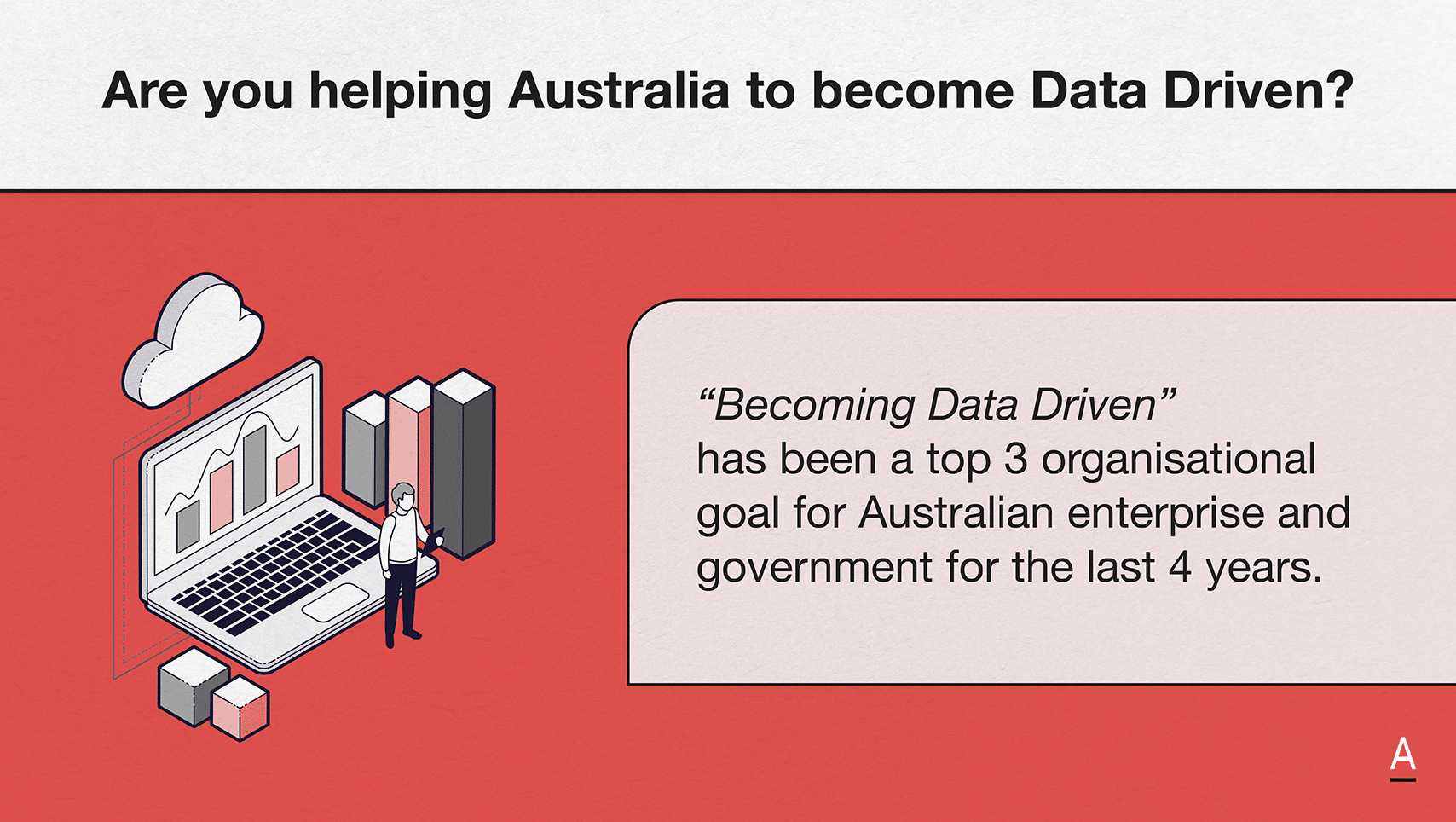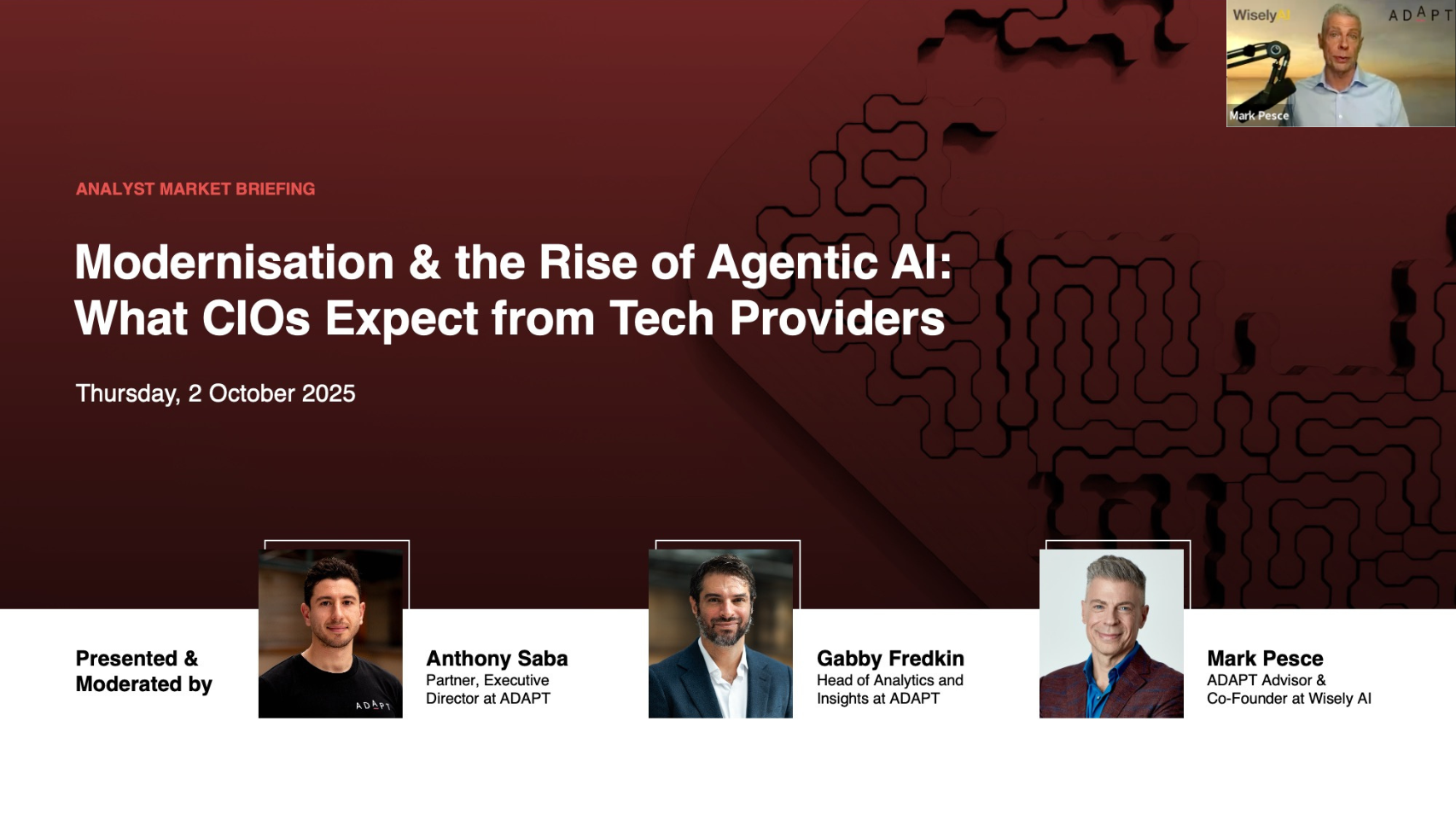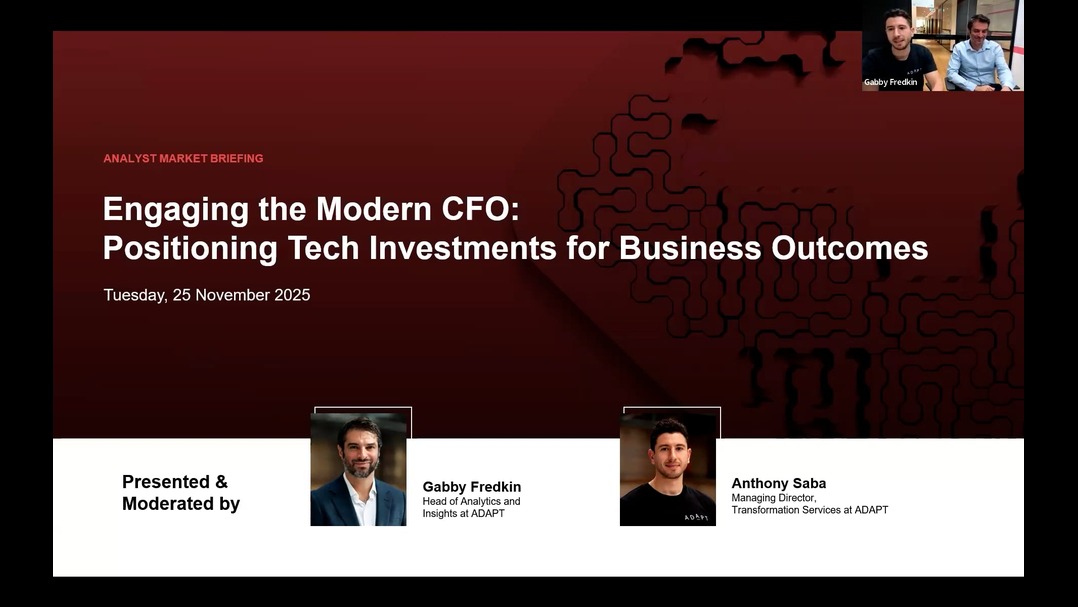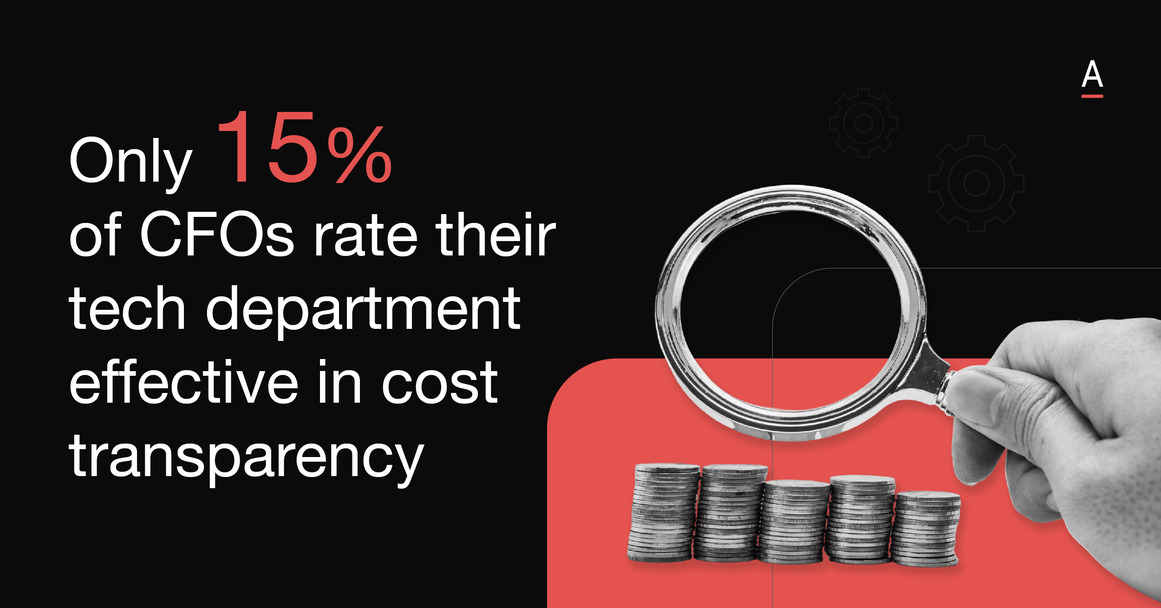Australian CIOs are being asked to do more with less: modernise unfinished estates, manage cost pressures, and lead AI adoption programs that boards and CEOs expect to be transformational.
Yet the reality is that most organisations remain immature in data quality, governance, and operational readiness.
At ADAPT’s recent Analyst Market Briefing, Gabby Fredkin, Head of Analytics & Insights at ADAPT, presented findings from 166 CIOs representing more than a fifth of national GDP.
Mark Pesce, ADAPT Advisor and Co-Founder at Wisely AI, provided context from his decades of experience in emerging technology and enterprise adoption.
Together they examined the tension between urgent modernisation needs and the growing push toward Agentic AI.
For technology providers, the session highlighted these themes shaping CIO decision-making in 2025 that vendors must align to if they want to build trust and relevance.
Growth has overtaken modernisation, but legacy estates hold CIOs back
CIOs now prioritise business growth above all else.
Growing revenue and delivering new products have overtaken technology simplification as the number one organisational goal.
Yet legacy environments are far from resolved.
Around 40% of mission-critical applications still run on outdated technology, creating silos that prevent real-time access to data.
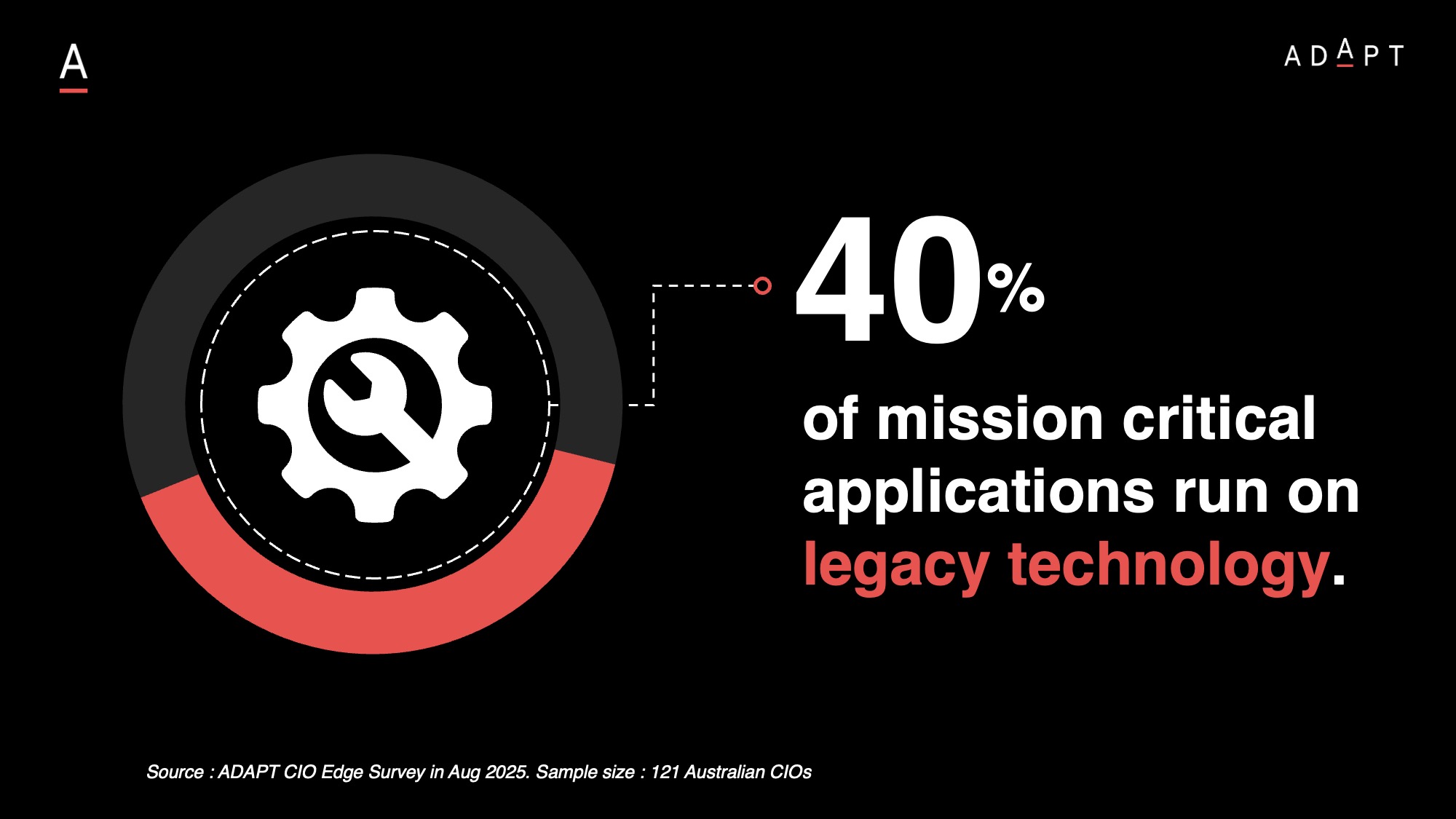
As a result, half of employees cannot access trusted data to do their jobs effectively.
Gabby explained that this leaves many CIOs caught between two demands: boards expect them to scale enterprise-wide AI initiatives, but the systems required to make AI effective are still fragmented.
Mark added that without reliable data flows, AI will not deliver transformational outcomes.
Vendors that can link modernisation efforts with business growth agendas will be positioned to help CIOs bridge this gap.
Platform silos and orchestration complexity block adoption
Most organisations start AI pilots inside existing applications such as collaboration tools, CRMs, or HR systems.
While these embedded agents provide immediate productivity support, they typically operate in isolation.
This forces duplication of data, prevents interoperability, and limits the potential for AI to scale across the business.
Gabby pointed out that 42% of data and analytics leaders rate their organisations as immature in data quality, which compounds the silo problem.
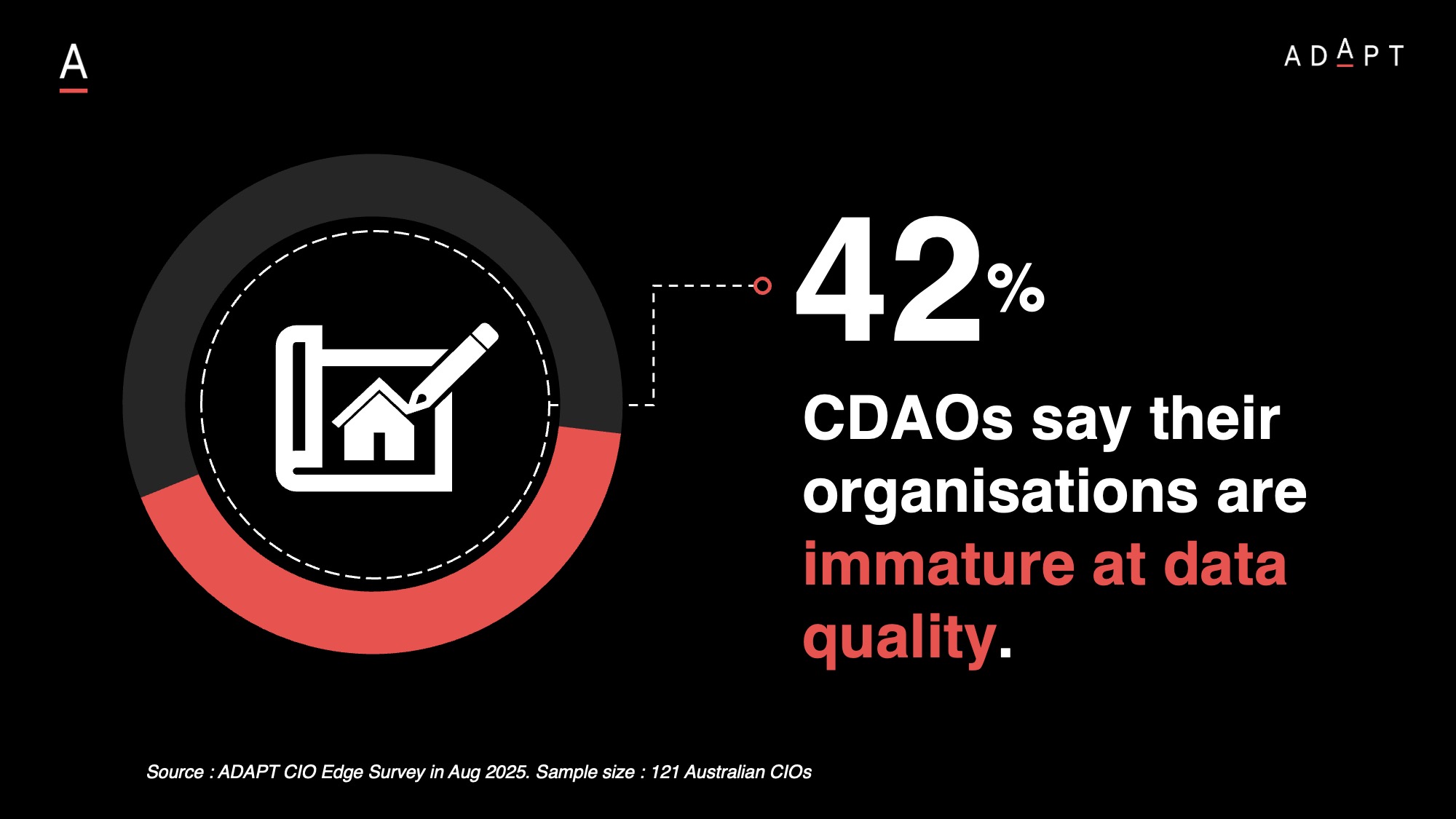
Mark observed that enterprises often abandon better tools if they sit outside approved ecosystems, because the risks of data leakage or compliance failure outweigh the potential benefit.
This leaves CIOs hesitant to expand AI adoption without an orchestration layer to govern multiple agents safely.
Vendors that reduce fragmentation and provide integration frameworks will directly address this barrier.
Decision rights are expanding beyond the CIO
Technology decisions are no longer the sole responsibility of the CIO.
Around 74% of CIOs report the CFO is directly involved in validating technology purchases, more than the proportion that involve CEOs.
Business unit leaders are also becoming more influential, with close to 60% of decisions requiring input from line-of-business executives.
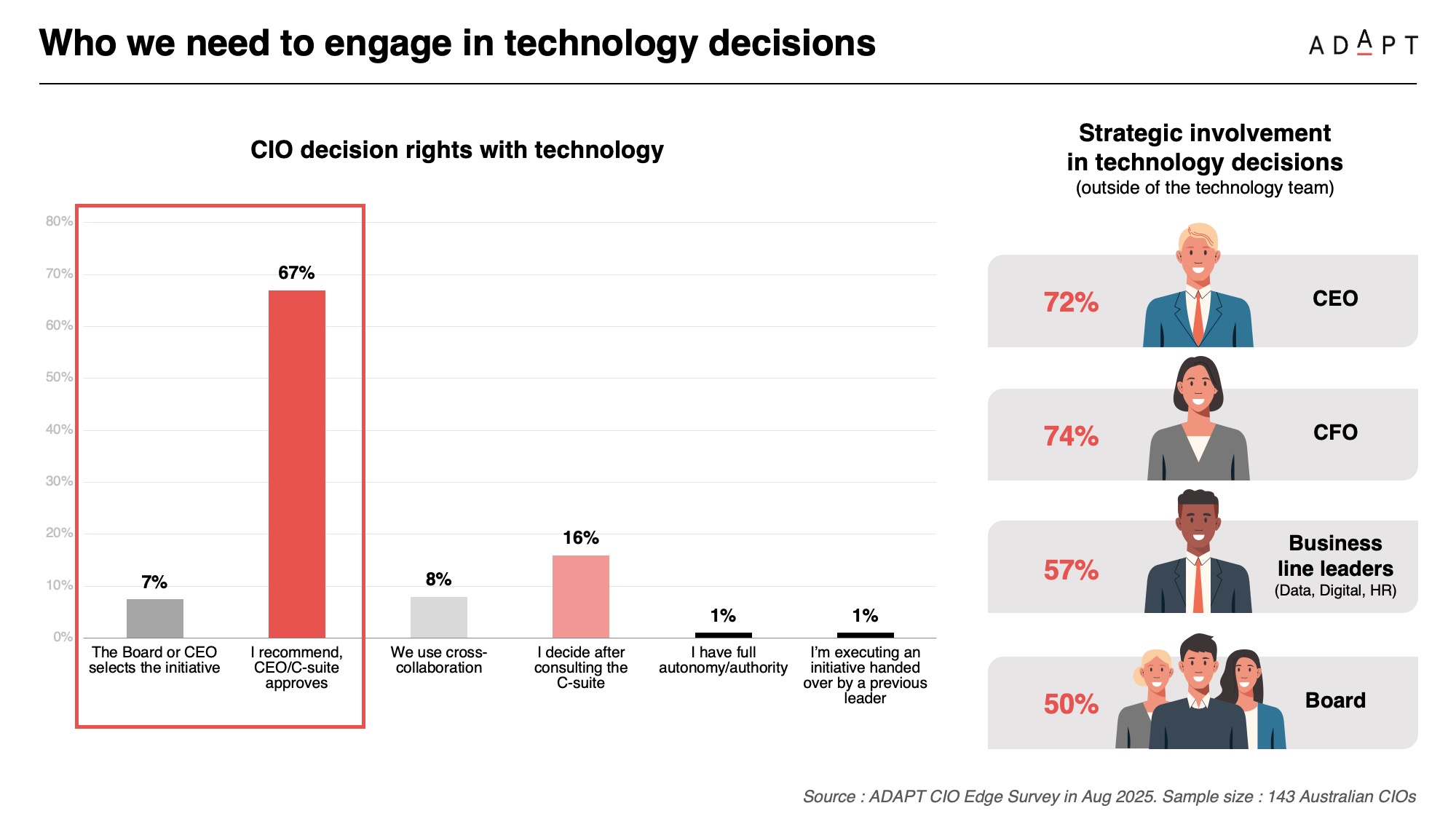
Gabby explained that CIOs are increasingly asked to act as advisors, helping business units build cases for new platforms without necessarily controlling the budget.
Mark noted that this trend increases the risk of initiatives stalling if proposals are not presented in clear financial terms.
Vendors must therefore equip CIOs with ROI frameworks and attribution models that resonate with finance leaders, while also engaging directly with business units who will ultimately champion adoption.
Low maturity and risk perceptions slow AI adoption
AI dominates boardroom agendas, yet adoption is still early.
Almost half of CIOs are in active exploration, while only a small minority have moved into targeted pilots or operational scaling.
This immaturity is reinforced by the fact that just 4% of CFOs believe their organisations are delivering value from AI.
Gabby explained that this disconnect between investment and outcomes is fuelling closer scrutiny from boards and finance leaders.
Mark added that where adoption is progressing, gains are modest, usually measured in 5–10% workflow improvements rather than radical transformation.
For vendors, the imperative is to position AI as a series of credible, incremental wins.
Demonstrating safe productivity improvements backed by governance and cost clarity will resonate more strongly than promising sweeping disruption.
Use cases remain narrow while governance concerns dominate
Only 2% of organisations have reached operational scaling with Agentic AI, showing that most are still experimenting and defining ownership.
Gabby likened this stage to flying a kite: progress is visible but direction and accountability remain unclear.
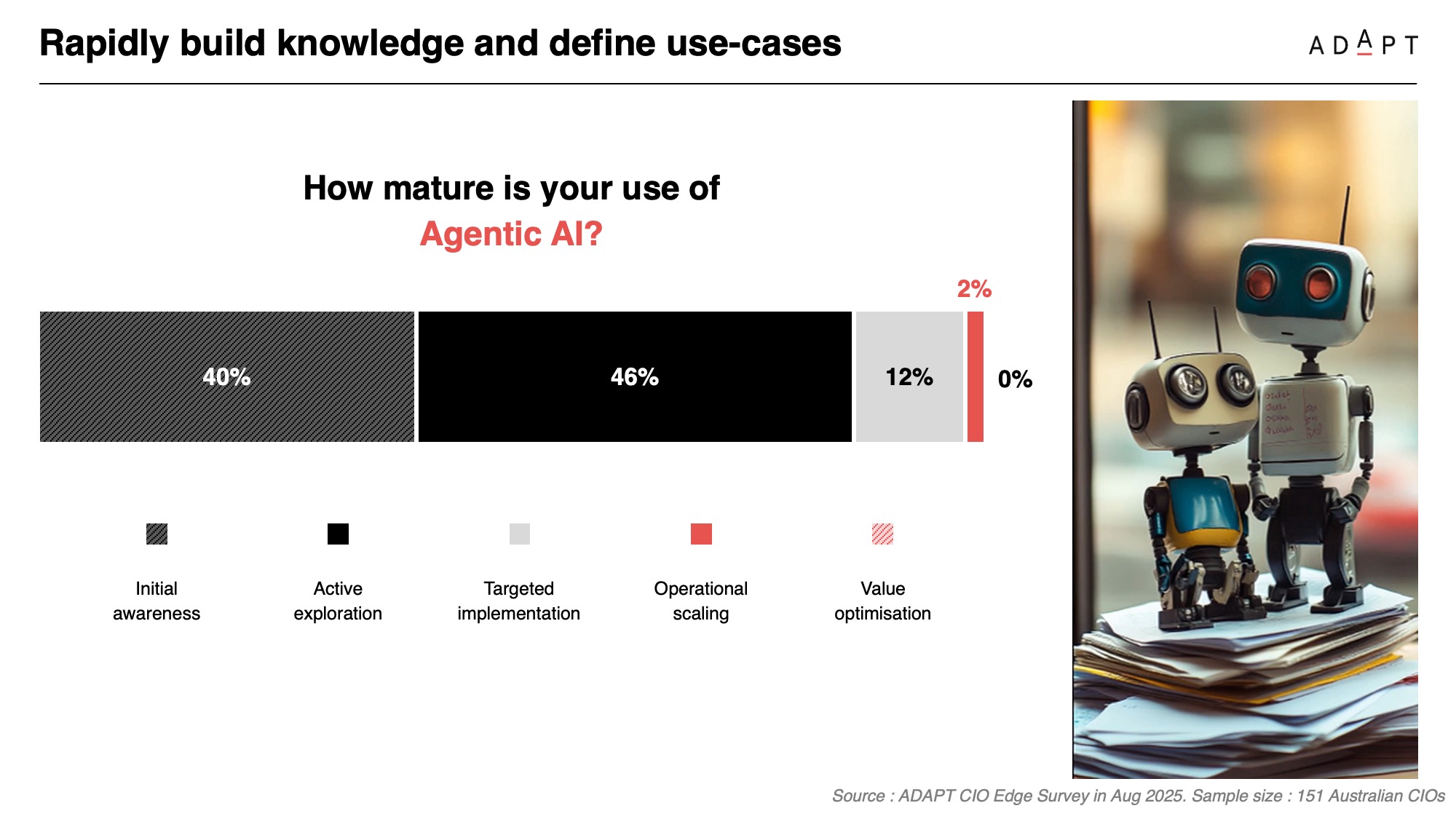
CIOs are concentrating on contained, measurable use cases such as customer service, ticket management, and administrative automation.
Mark noted that these domains offer safe experimentation without risking compliance breaches or system disruption.
These areas are attractive because they are repetitive, measurable, and lower risk compared to strategic functions.
However, governance concerns dominate adoption decisions.
CIOs worry about how AI agent decisions will be checked by humans, how much access agents should have to sensitive data, and how outputs can be monitored for compliance and accuracy.
Mark highlighted that customer-facing deployments are particularly risky, as organisations cannot fully control outcomes once agents interact directly with external stakeholders.
CIOs are therefore focusing on internal use cases first, and looking to vendors that can embed robust monitoring and compliance mechanisms into their offerings.
Recommended actions for tech vendors
CIOs are tasked with modernising under pressure while proving the value of AI against a backdrop of risk aversion, immature data practices, and financial scrutiny.
Vendors that want to remain relevant must focus on practical actions that enable safe, measurable, and business-aligned adoption.
- Demonstrate business outcomes – Tie solutions directly to revenue growth, efficiency, and customer impact while addressing legacy systems that restrict AI effectiveness.
- Reduce orchestration barriers – Deliver integration and management frameworks that allow multiple agents and workflows to interoperate safely across environments.
- Arm CIOs for finance alignment – Provide ROI models, attribution frameworks, and cost narratives that enable CIOs to win support from CFOs and boards.
- Guide safe adoption – Support low-risk use cases such as service, ticketing, and admin automation while embedding human oversight and compliance.
- Set realistic expectations – Position AI as an enabler of 5–10% workflow improvements in the short term, with a roadmap to broader transformation over time.
CIOs in 2025 face a dual mandate: to complete unfinished modernisation programs while introducing AI initiatives that boards believe will redefine the enterprise.
Yet most organisations lack the maturity, governance, and capability to scale AI responsibly.
For vendors, the opportunity lies in enabling CIOs to manage complexity, govern adoption, and achieve incremental returns.
Provide clarity of value, reduce integration hurdles, and build safe adoption pathways.




